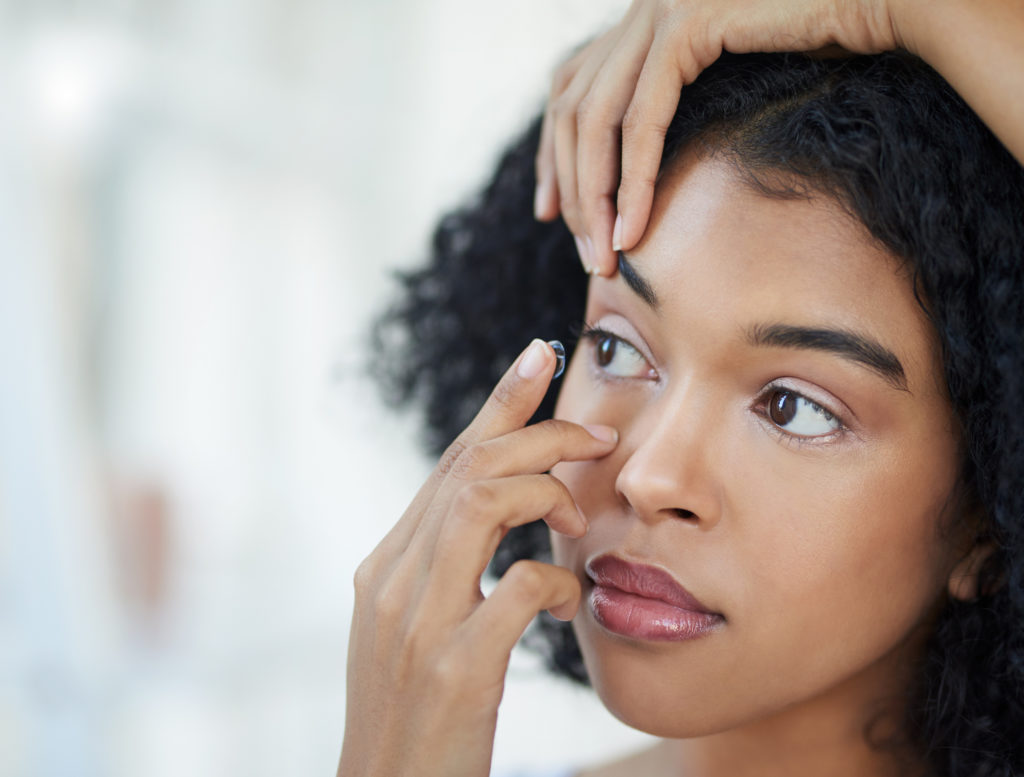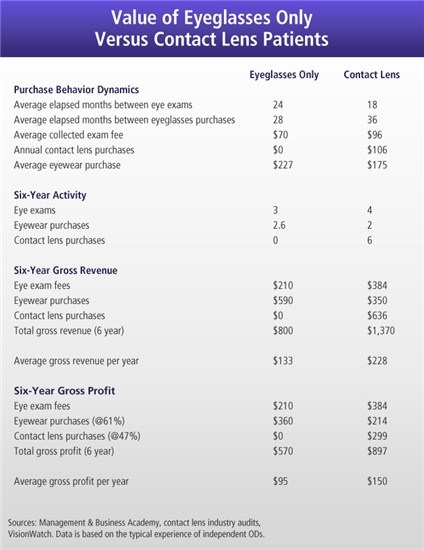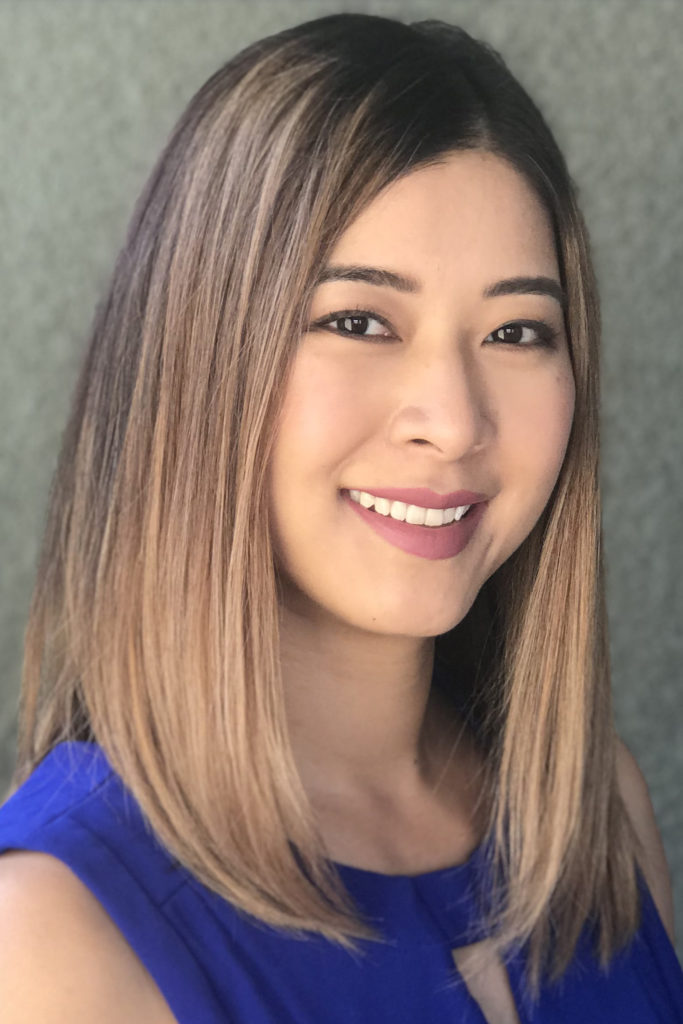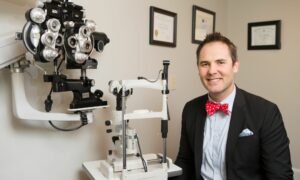By Melody Huang, OD

Feb. 6, 2019
Contact-lens wearing patients are an essential part of most practices. According to the Management and Business Academy:
Contact lens patients are significantly more valuable to a practice over the long term than eyeglasses-only patients. That’s because contact lens patients:
• Have more frequent eye exams (every 18 months versus every 24 months for eyeglass-only patients)
• Pay higher fees for exams (average of $96 versus $70)
• Make more frequent purchases (every year versus every 28 months)
• Also buy and use eyeglasses and sunwear
The improved quality of life that wearing contacts can provide, along with the higher profitability of contact-lens patients, means it’s worth finding ways to prevent patients from dropping out from contact lens wear.
 In my practice, in which I am an associate, we have seven ODs, four support-staff employees, and one location, inside a Costco. We conduct about 250 comprehensive exams per week for the whole clinic put together. In those exams, keeping contact-lens patients healthy and comfortable in their lenses is a high priority.
In my practice, in which I am an associate, we have seven ODs, four support-staff employees, and one location, inside a Costco. We conduct about 250 comprehensive exams per week for the whole clinic put together. In those exams, keeping contact-lens patients healthy and comfortable in their lenses is a high priority.
At least 30 percent of patients on a weekly basis are contact lens wearers. If we average about 250 exams/week for the whole office, then about 75 of them are contact lens exams. I estimate the dropout rate for my contact-lens patients to be around 10 percent. This lost revenue can add up significantly.
We are an independent optometrist office separate from any optical, so our office does not receive revenue from contact lens supply sales, only from exams. We typically charge $95 for a contact lens exam. If we assume an average of 12,000 exams/year, that means 3,600 of those are contact lens exams. Assuming 10 percent of those contact wearers drop out, that’s $34,200 less revenue per year.
Patients Won’t Usually Tell You Directly About Discomfort
Usually patients will not tell you why they dropped out. You must be a detective. You have to read between the lines because they may give you a reason, but it may not be the real reason.
Some of my patients state that they were just “too lazy” or “too busy” to come back for an exam, and their contact lens prescription expired. While that may be true, ask more questions to find out if there is another reason.
Some patients admit price is an issue, and find glasses more cost-efficient. Astigmatic or presbyopic contact lens patients may drop out due to inferior vision compared to glasses. Others may drop out due to lens discomfort and dryness.
Sometimes you can tell there’s a problem before the patient says anything at all to you because they have red, irritated eyes. They have been wearing their glasses more often and have been unable to keep contacts in their eyes all day. They may tell you they have to toss out their contacts earlier than their normal wear schedule.
With such great challenges eliciting information from patients about contact-lens wear and comfort, here are three questions I’ve found helpful in preventing dropouts.
What is something you would improve about your contacts?
Asking an open-ended question will give you much more information than asking a question such as “How are you doing with your contacts?”
A question like this will prompt the patient to really think about their contact lens wear experience as opposed to just saying, “They’re fine.” For example, your patient may respond, “Now that I think about it, my contact lenses are blurry when I drive at night and feel dry after only a few hours.”
As the optometrist, it is our duty to give patients new contact lens recommendations instead of leaving them in the same old contact lenses. If your patient wears monthly contact lenses and you feel they may drop out due to dry eye, tell them about the improved comfort with daily disposables and give them some trials. Break down the price for them so they realize it’s not as expensive as they think. I like to tell patients they can have quality, comfortable daily disposables for less than $1.50 a day! They’ll appreciate that you recommended something new instead of keeping them in the same contacts they wore for the past 10 years.
How many hours do you wear your contacts each day, and how do they feel at the end of the day?
If a patient complains about blurry vision and dryness after wearing their contacts for four hours as opposed to 14 hours, you may need to address their issues differently. Lens discomfort is one of the most common reasons for contact lens dropout, so make sure to address any dry eye or ocular surface disease issues.
For example, if your patient tells you the contacts only feel dry after they wear them for 14 hours a day, you may need to re-educate them on a proper contact lens wear schedule. Recommend they put on their glasses after their work day, and supplement with the appropriate rewetting drops.
On the other hand, if your patient complains of discomfort a short time after insertion, and sounds like they are ready to give up on contacts, give them daily disposables to try. If they are already wearing a daily disposable lens, give them a new brand to try. Remember, your patients depend on you to tell them about the latest contact lens technology, so don’t just keep fitting them with the same old contacts that have been around for decades!
Also, set your patient’s expectations. If your patient has significant dry eye, let them know that comfort and vision in contacts will improve once their dry eye is under better control.
If necessary, prescribe dry-eye treatments along with the new contacts. If you prescribe artificial tears, specify a brand and dosage. Other considerations include Restasis/Xiidra, punctal plugs and home/in-office treatments for meibomian gland dysfunction.
How is your vision with your contacts, particularly for reading and computer?
Another reason for contact lens dropout is inadequate vision, especially in presbyopic patients or patients who may have accommodative issues and perform many near-vision tasks.
If a patient complains of blurry vision in their contacts and they spend several hours on a computer every day, check for accommodative problems (even if they are under 40). You may discover that your patient would benefit from switching into a multifocal contact lens.
Be their hero and fit them with a multifocal contact lens. Better yet, give them a daily disposable multifocal for better comfort (remember that presbyopes may also have decreased basal tear production).
Educate the patient on how multifocals work, and let them know there may be an adaptation period. Schedule them for a follow-up in 1-2 weeks to see if you need to adjust their prescription.
 Melody Huang, OD, is a freelance optometrist and writer practicing in Los Angeles, Calif. To contact her: mhuang.opt@gmail.com
Melody Huang, OD, is a freelance optometrist and writer practicing in Los Angeles, Calif. To contact her: mhuang.opt@gmail.com

























